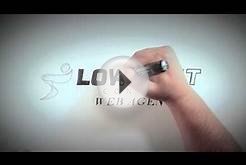There are three main ways of pricing online advertising:
1. Impressions
An impression is the display of an ad on a page in a publisher's site. This model is justlike print advertising, and for the advertiser it carries the same disadvantages asprint - you only know that a reader has had the chance to see your ad, not whether they actually looked at it or thought about the information you impart in it.Of course, it also carries the same advantages of print advertising, chief among them theability to "brand" your business's name by placing it in front of thousands ofeyeballs.
This model is also known as CPM (which stands for cost per thousand, the M coming from the Latin "mil, " or thousand) because the advertiser pays forplacement in increments of 1, 000 readers. For example, if you wanted to get 30, 000impressions at a site that charged $15 CPM, you would pay $450.
CPMs vary widely from site to site. A publication with demographically desirablereaders such as The Wall Street JournalInteractive Edition can demand a CPM of $65, while a general interest publication withfew readers might not be able to demand a $1 CPM.
As you browse over rate cards and talk with ad sales reps, bear in mind that very few sitesare charging their listed CPMs - there is a glut of ad space available, so as anad space buyer you will often be able to get publishers to "go off the ratecard" and give you substantial discounts.
2. Click-Throughs
The main advantage of advertising in a hyperlinked medium like the Web is the ability to trackthe number of people who are actually clicking on your ad and coming to yoursite. As an advertiser, wouldn't you rather pay for only those customers who actuallyclick on your ad?
In theory, click-through pricing is a great idea, and a number of companies now offerit. But this model has been slow to be adopted on a large scale for a couple ofreasons - publishers don't want to be penalized if you run a crummy ad that doesn'tattract any clicks but which still takes up their space; and publishers point out thatadvertisers are still getting the branding effect each time an ad is served up, whether ornot it is clicked on.
If you do buy ads based on a click-through model, you will want to make sure that youcompare the click-through data you get from the publisher or ad network with your ownserver's logs.
By the way, apart from this as a pricing issue, click-through rate (CTR) will still beone of your best measures of an ad campaign's success. That is, even if that isn't how youare paying for the ad, you can still use CTR in your internal analysis of how variousbanner ads and various campaigns perform.
While the click-through model is based on how successful your ad is at gettingcustomers to your site, the customer action model is based on actual sales or anotherdirect customer action that results from an ad. The best example of this model may beAmazon.com's AssociatesProgram, which pays a bounty to Web sites that refer visitors back to Amazon.com. Inthis case, the "banner ad" is simply the special Amazon URL, which is built into the link from the referring site.










